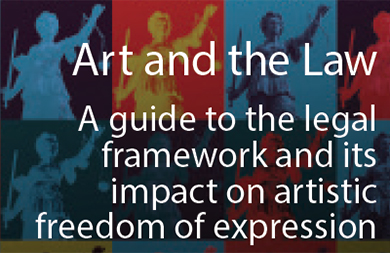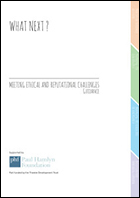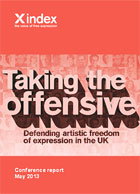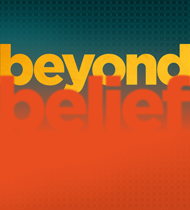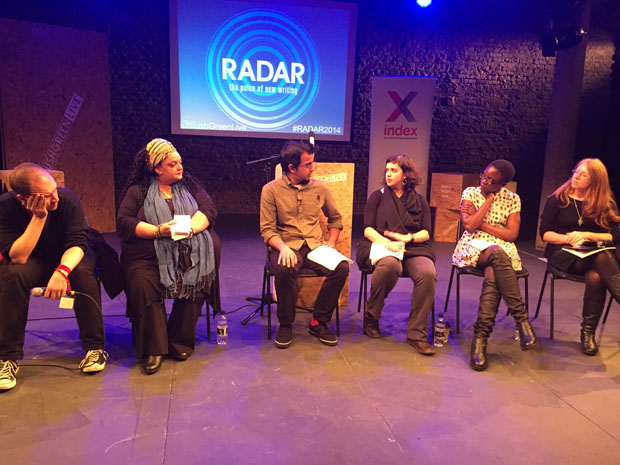Julia Farrington: Pre-emptive censorship by the police is a clear infringement of civil liberties
The following was presented at No Boundaries: A Symposium on the Role of Arts and Culture. Video of Julia Farrington and the day’s other speakers is available on the No Boundaries site.
In 1972, Michael Scammell, the first editor of Index on Censorship magazine, wrote in the launch issue: “Freedom of expression is not self-perpetuating but needs to be maintained by the constant vigilance of those who care about it.”
We obviously haven’t been very vigilant here in the UK.
As we heard last week, when the artist Mimsy’s work Isis Threaten Sylvania was removed from the Passion for Freedom exhibition at the Mall Galleries, London, artistic freedom of expression was put up for sale at £36,000.
And disturbing though it is, the news is a gift to those who have been concerned about the direction policing of politically or socially challenging art was taking. Now the situation is crystal clear and marks an alarming new approach to the policing of controversial art.
In last week’s case, the police were concerned about the “potentially inflammatory content” of Mimsy’s work, so they gave the organisers a classic Hobson’s Choice: if they went ahead with their plans to display it, they would have to pay the police £36,000 to cover the cost of security for the six-day show.
The police took the view that a perfectly legal piece of art, which had already been displayed without incident earlier in the year, was inflammatory. And in the balance of things as they stand, this opinion outweighs the right of the artist to express him or herself, the organisation’s right to present provocative political art, the audience to view it and those that protest against it, the right to say how much they hate it.
If this goes unchallenged, it will set a very dangerous precedent for foreclosing any work that the police don’t approve of.
But going against police advice is tough. In Index’s information pack on Public Order – part of a series of booklets looking at laws that impact on what is sayable in the arts, we ask the question: “What happens if police advise you not to continue with presenting a piece of work because they have unspecified concerns about public safety – and yet tell you it is your choice and they can only advise you?”
The answer is that in principle, in law, you are free to proceed.
But it goes on to talk about duties the organisation has to their employees and members of the public present on their premises, which fall under licencing and other obligations.
But the point is no one has taken this to the courts, so it hasn’t been tried and tested.
As it stands — and in the heat of a crisis when these decisions are mostly reached — police advice is a Hobson’s Choice in pretty much every case.
This latest example of policing comes hot foot after revelations in the summer that the police were involved in, though allegedly not directly responsible for, the cancellation of Homegrown.
And it is only a year since Exhibit B at the Vaults in London and the Israeli hip-hop opera The City in Edinburgh were cancelled on the advice of the police following protests outside both venues.
Way back in 2004 the theatre world was shocked when protest led to the closure of Gurpreet Kaur Bhatti’s play – Behzti following police advice. Gurpreet says that what shocked her most at the time, was how the politicians didn’t take the closure as an opportunity to challenge the police decision, defend her right, and promote the importance of freedom of expression.
Six years later, the Coventry police wanted £10,000 per night to guarantee the safety of the premier production of Gurpreet’s subsequent play Behud at the Belgrade Theatre, which was her creative response to having her play cancelled in Birmingham; and which, because of the playwright’s history of attracting controversy, was treated by the police as a public order issue from day one of the production.
When faced with the police’s bill, Hamish Glen, artistic director of the Belgrade wrote to the police and said it was a fiscal impossibility for the theatre to pay up, and would amount to de facto censorship of Gurpreet’s voice for a second time. They came back asking for £5,000 per night instead which got the same response from Hamish – and finally they waived the fee and the show went ahead without incident.
In investigating this for a case study I wrote, I asked how the police had come up with the figure, and the answer was that it was assessed by the same criteria for special police services at a football match or a music festival. There is no guidance on policing a not-for-profit arts organisation dealing with fundamental rights – it is not on the police radar.
Writing a case study on the policing of the picketing of Exhibit B by Boycott the Human Zoo earlier this year also gave a series of interesting insights
Only one police officer from British Transport Police – The Vaults are under Waterloo Station and therefore under BTP jurisdiction – and two Community Police Officers attended the demonstration of 200 people – so it was obviously not considered a priority, despite the fact that social and print media made it clear that the production was very divisive and both the Boycott and the Barbican had talked to the police.
When, as the protest escalated and extra police arrived, the officer who took charge, talked to Sara Myers, the organiser of the Boycott, asking what was going on – they seemed not to know anything about it. He asked Sara what she wanted. She said she wanted the Barbican to close the show, and she told him that they intended to picket each of the five performances if they did not. The officer’s response was this is much ado about nothing – we haven’t got the resources to police this – we have to be out fighting serious crime.
So The Heckler’s Veto was seen to be working in London and in Edinburgh, just as it had worked in Birmingham ten years previously. When faced with a noisy demonstration, the police showed that they would take the path of least resistance and advise closure of whatever was provoking the protest.
And now a year later, with the removal of Isis Threaten Sylvania, we have seen a shift from the police advising closure following protest, to the police contributing indirectly or directly to the decision to remove work to avoid protest.
This is pre-emptive censorship by the police and represents a major shift in policing and is a clear infringement of civil liberties. It threatens the arts as a space for public debate about the politics of the world we live in.
Though of course because of the paradox of censorship, it actually has the opposite effect, it has amplified the work and many, many more people will be talking about that work because of the police’s move to close it. That doesn’t lessen the sting of the police’s new boldness and the trajectory they seem to be on with this latest act of censorship.
But let’s look at it from the police’s point of view. They are facing massive cuts themselves. George Osbourne’s latest figures indicate at the lowest end – a 25% cut on top of previous rounds. There are fewer police officers on the streets than at any time since the 1970s.
There is no guidance about policing of artistic freedom of expression, compared to pages of guidance on managing protest which stresses on every page the right to protest. When it comes to artistic cases it is left to professional judgement. I have spoken to several senior police officers about this and they will admit that mistakes have been made, but there have never been any consequences for these mistakes, so they remain quite blithe about them. And the bottom line with the police is always public safety.
They also, I believe, feel they have jurisdiction over certain volatile and socially sensitive areas of society where they have duties to prevent crime and to maintain law and order and have community cohesion responsibilities. So when artists venture into this territory with work that may cause offence, their reaction is to simply remove the provocation.
We also now have elected police commissioners who have political agendas – where inevitably policing unpopular, minority voices is going to come low on their agenda – however brilliant they may be, or however important they might be to the fundamental tenets of a liberal democracy.
And this has never been challenged. There has never been any judicial review of the policing of artistic freedom of expression. Judicial Review is the recourse that any arts organisation has when faced with what they consider to be inadequate or unfair policing. Actions by the police are subject to review by the courts for a number of reasons, including for instance if the police failed to consider alternatives to closure, or Article 10 rights generally.
We can and should expect more of the police. Tamsin Allen – senior partner at Bindmans states in an article she wrote for the case study of Behud: “The police have an obligation to fulfil their core duties – those are now enhanced by their duties under the Human Rights Act not to act incompatibly with the European Convention on Human Rights. The convention imposes both a qualified obligation not to interfere with the exercise of the right to freedom of expression and protest and a positive obligation to take appropriate steps to protect those rights. This may change if the Human Rights Act is abolished.”
And we are talking here about legal expression. We do not see artists going to court in the UK – the last major case in this country was Lady Chatterly in the 60s; the Oz Trial, the publishers of the poem The Love That Dares to Speak its Name in the 70s; and the lesser known case of the Human Earrings in 1989, being amongst the very few other cases.
It is also worth pointing out what is obvious – that nearly all the artworks that have been foreclosed by the police over the past few years deal with race and or religion and, Exhibit B notwithstanding, the majority of contemporary cases of contested art are by artists from black and ethnic minorities. This only emphasises the fact that freedom of expression is a biased affair in the UK and I believe will remain so while our society and our culture are not equal.
Acknowledging that, I would add to what Michael Scammell said – the space for freedom of expression has to be more than just maintained – it has to be enlarged and extended.
And as an urgent part of that, we have to challenge this culture of policing, this policing of culture.
The climate is not set fair for promoting the importance of artistic freedom of expression – the political climate is set against human rights. Policing as we have seen with absolute clarity this week in the case of Mimsy’s work, is subject to the prevailing laissez faire of the market place.
In late 2013, I asked Keir Starmer, former director of public prosecutions at the Crown Prosecution Service, if he felt there was a need for police guidance in the area of art and offence and he said emphatically yes. He said he thought it was going to be an increasingly major policing issue over the coming years. He was right.
We have to open up discussion at the highest level with police and the prosecution service, if we are to safeguard the space for freedom of expression in the arts, especially where it relates to political art. The climate might not be conducive, but it has not been tried before, systematically – it is uncharted – let’s go there.

